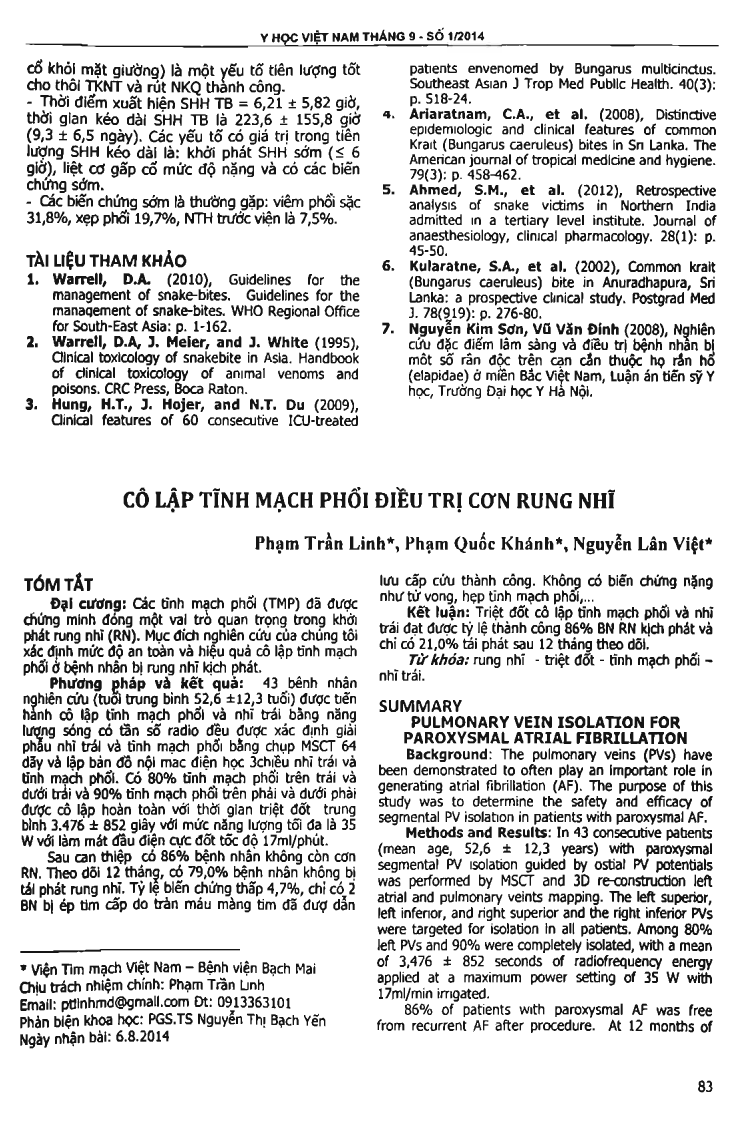
Background: The pulmonary veins (PVs) have been demonstrated to often play an important role in generating atrial fibrillation (AF). The purpose of this study was to determine the.safety and efficacy of segmental PV isolation in patients with paroxysmal AF. Methods and Results: In 43 consecutive patients (mean age, 52,6 + or - 12,3 years) with paroxysmal segmental PV isolation guided by ostial PV potentials was performed by MSCT and 3D re-construction left atrial and pulmonary veints mapping. The left superior, left inferior, and right superior and the right inferior PVs were targeted for isolation in all patients. Among 80 percent left PVs and 90 percent were completely isolated, with a mean of 3476 + or - 852 seconds of radiofrequency energy applied at a maximum power setting of 35 W with 17ml/min irrigated. 86 percent of patients with paroxysmal AF was free from recurrent AF after procedure. At 12 months of follow-up, 79,0 percent of patients with paroxysmal was free from recurrent AF. Two patients have been complicated tamponate after the procedure but survival cured. There were no other complications. Conclusions: With a segmental isolation approach that targets for 4 PVs, a clinically satisfactory result can be achieved in 86 percent of patients with paroxysmal AF after procedure and in 79,0 percent at 12 month follow-up.
- Đăng nhập để gửi ý kiến
